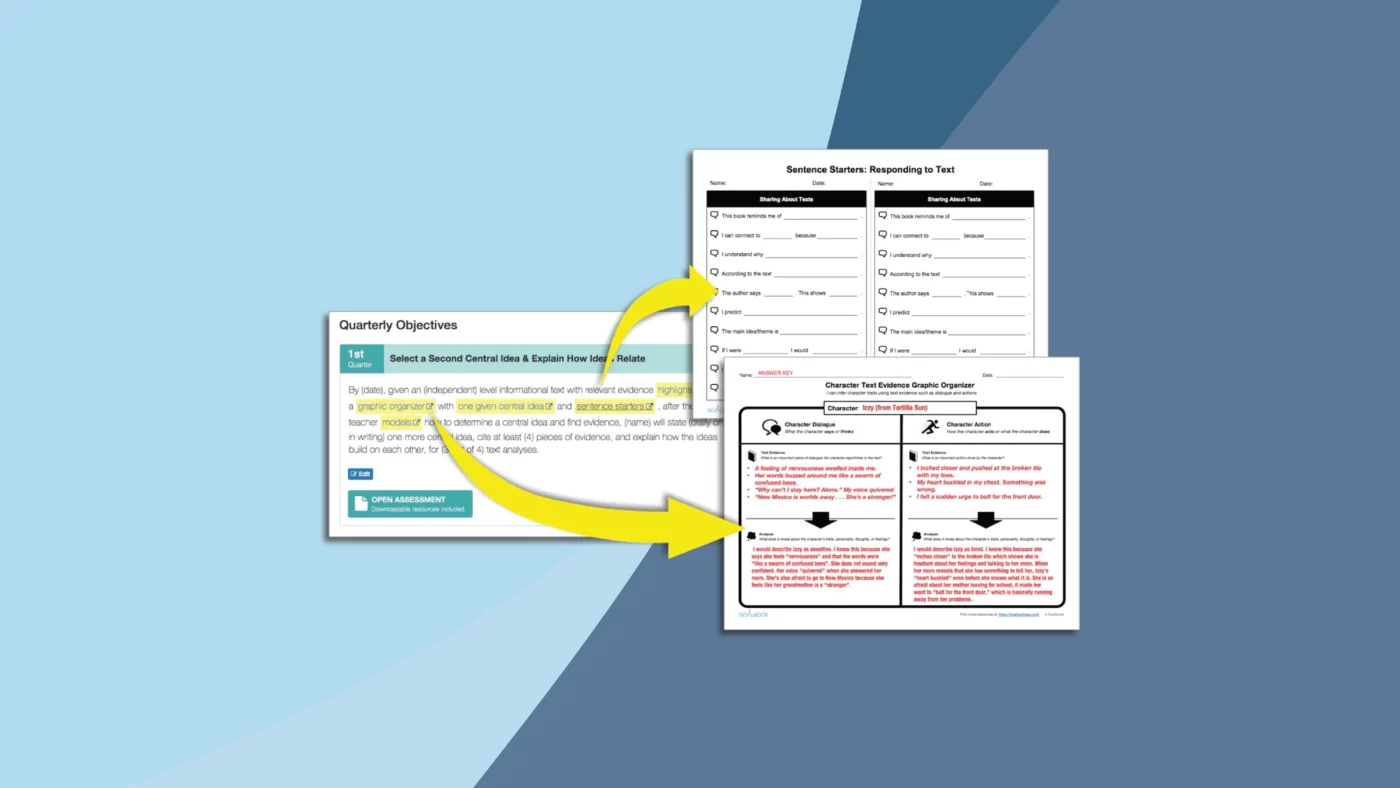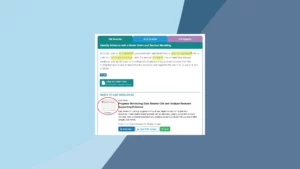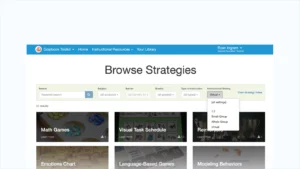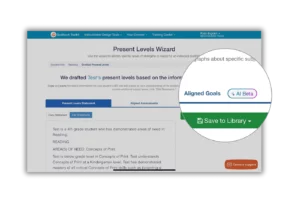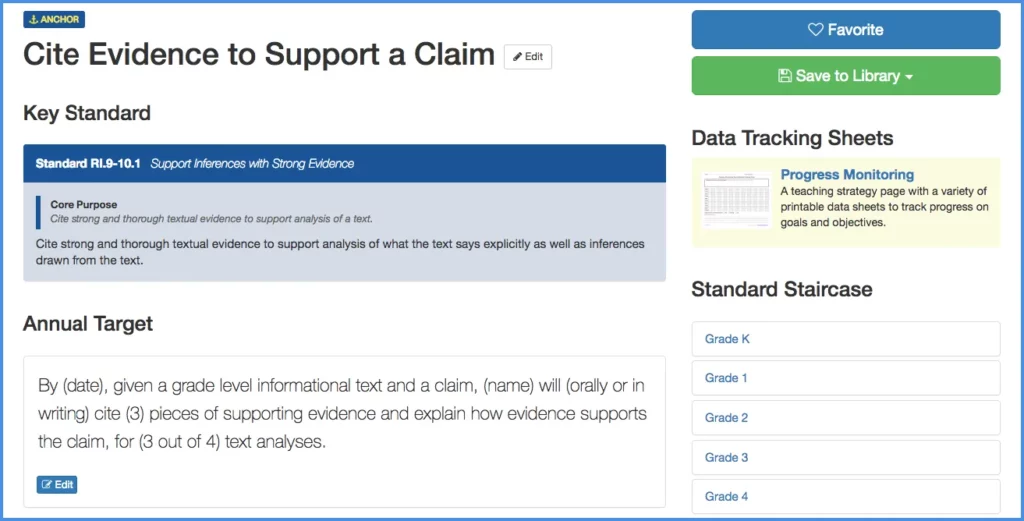
Citing Evidence and Central Idea
Since last year when we introduced Anchor Pages to Goalbook Toolkit they have proven to be a strong curricular asset for teachers to design instruction around the most foundational standards in grades 3–8. We are excited to bring Reading Anchor Pages to our partners who work with high school students.
These High School Anchor Pages retain all of the same critical elements that all anchor pages have such as incremental learning targets that are supported by learning objectives that scaffold towards mastery. Additionally, they include assessments and instructional resources that teachers can use to help them deliver rigorous instruction.
This release explicitly engages high school students in citing and analyzing evidence and with the analysis of how authors develop central ideas.
What Makes this Anchor Page Release Unique?
An important barrier at the High School level is expressing complex ideas through writing, we’ve incorporated strategies that scaffold for this means of expression of complex ideas.
Our team identified a specific UDL principle to focus on that is largely ignored in high school settings in Tier I through Tier III environments. That principle is the necessity to provide multiple means of expression. We felt that it was critically important to provide learners alternatives for demonstrating what they know because curricular resources for high school students tend to be largely focused on having students write organized paragraphs about what they’ve learned without very much scaffolding for the actual writing that is involved.
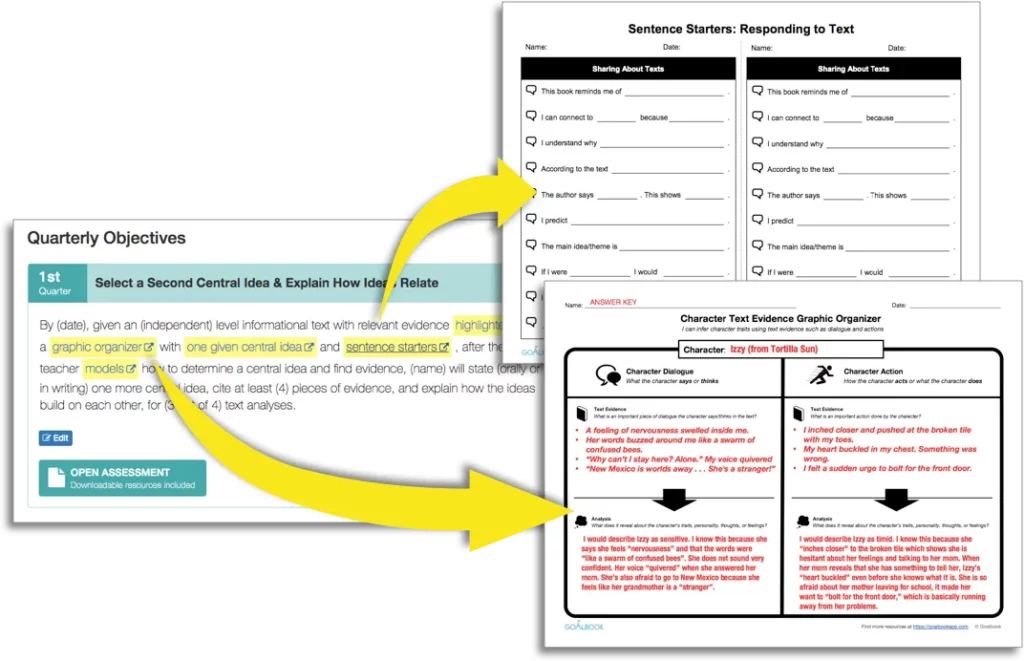
These Anchor Pages help students clearly organize and express their thoughts about the text without allowing the actual means of expression to hinder their mastery of the goal. This is accomplished by the inclusion of two elements:
- Graphic Organizers to help students capture, analyze, and express their thoughts about texts.
- Teaching Strategies connected to metacognition.

The quarterly objectives and assessments included in these pages are strategically scaffolded so that by the time students are performing at the level specified by the annual target, they can independently engage in the metacognitive processes they’d been practicing with support.
